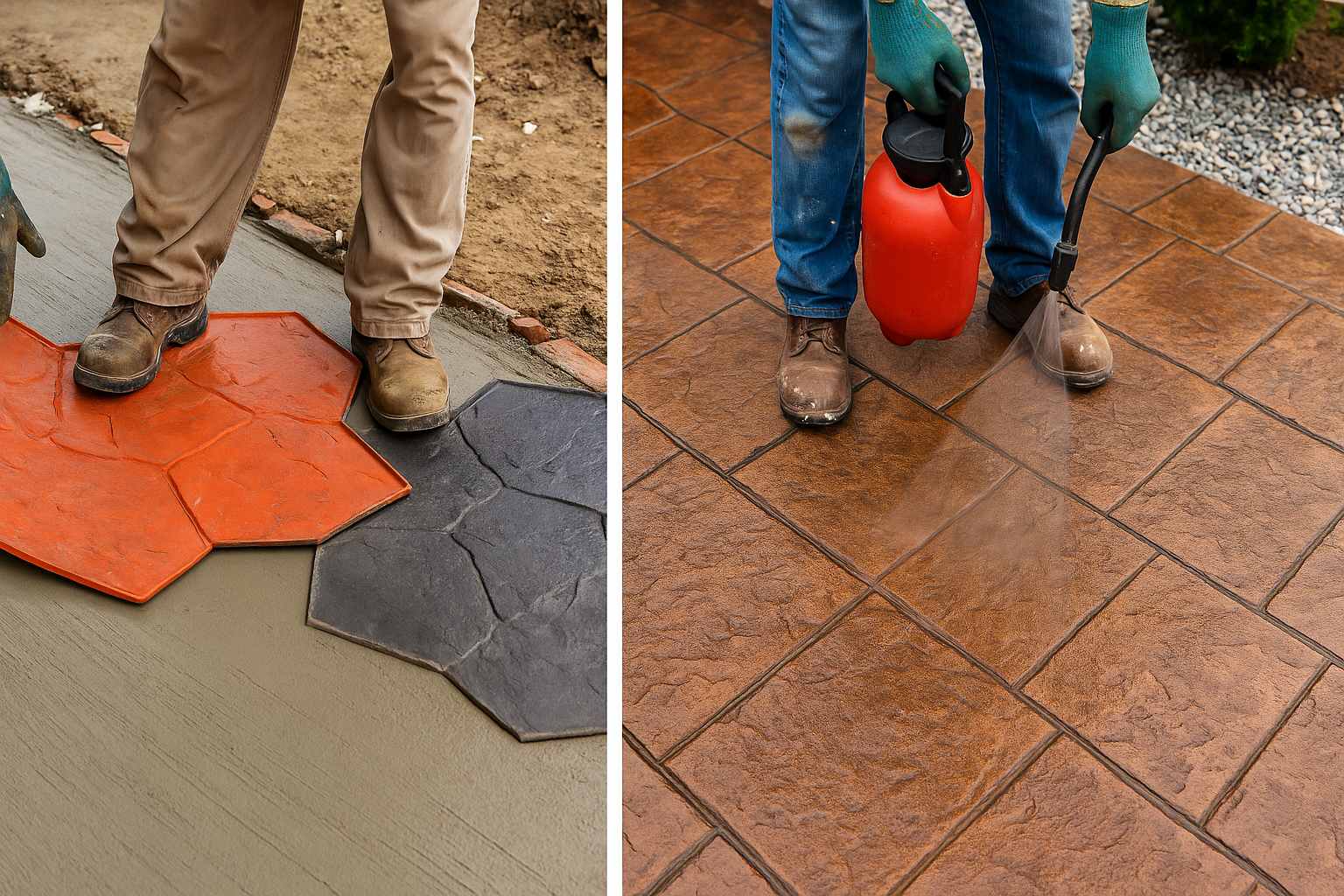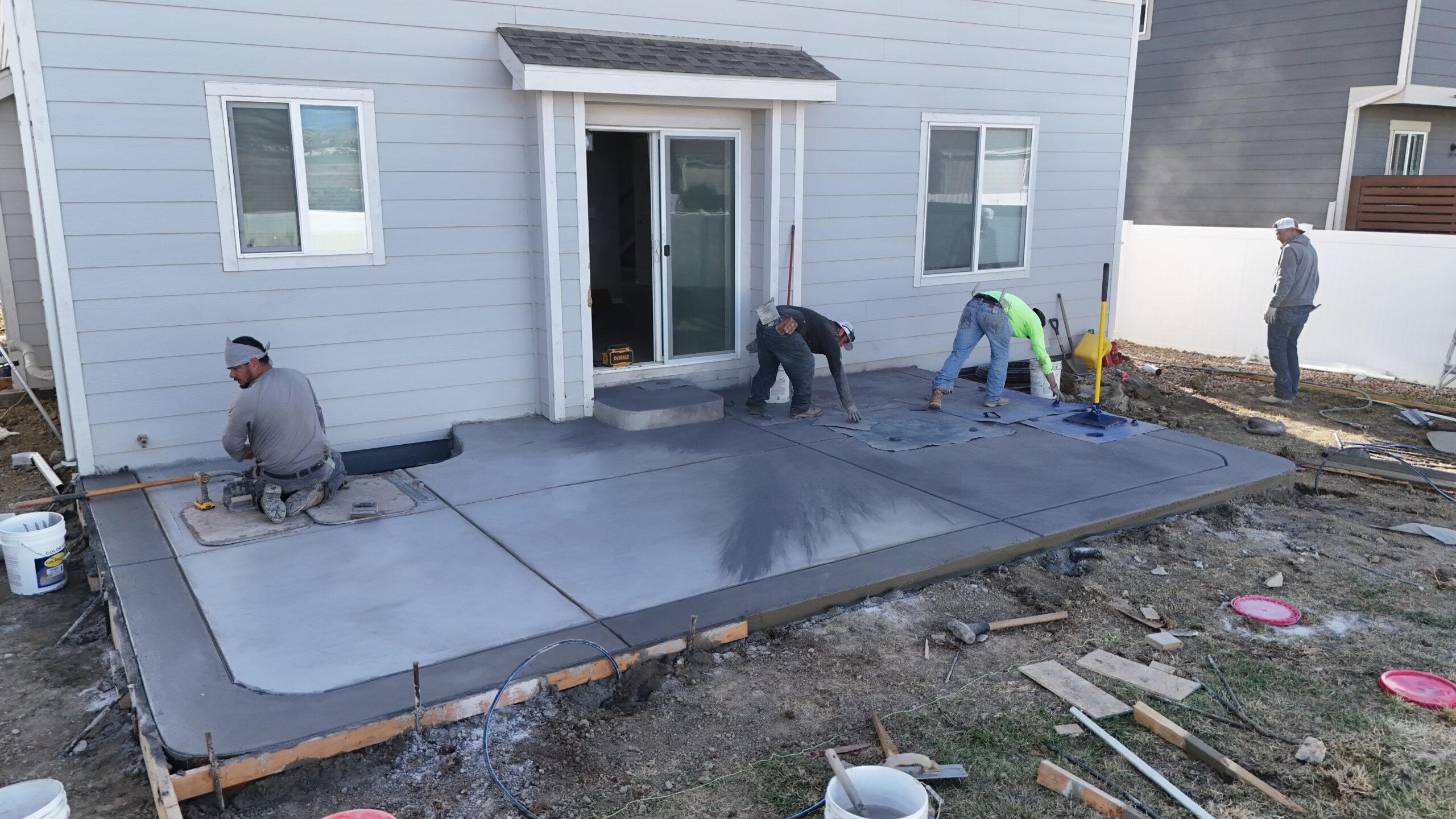

When it comes to upgrading outdoor spaces, stamped and stained concrete has become one of the most popular options for Colorado homeowners. From decorative patios in Berthoud and Loveland to elegant driveways in Westminster and Longmont, stamped concrete offers the perfect blend of beauty, durability, and affordability.
But Colorado’s unique weather and elevation create specific challenges for concrete finishes. Understanding how stamping and staining work—and how to care for them—can help you make the most of your investment.
Stamped concrete is ordinary concrete that’s imprinted with a pattern or texture while it’s still soft. Using special mats, installers can mimic the appearance of natural materials like stone, brick, slate, or even wood.
This technique gives homeowners a high-end look at a fraction of the cost of natural stone. It’s often used for:
Patios and outdoor living spaces
Driveways and front walkways
Pool decks
Entryways and courtyards
The beauty of stamped concrete is its versatility. You can choose from dozens of patterns, textures, and colors, allowing the surface to match your home’s architecture and landscape.

While stamping gives texture, staining provides color and depth. Stained concrete can transform a plain gray slab into a rich, vibrant surface that resembles natural stone or tile.
There are two main types of stains:
Acid-based stains, which chemically react with the concrete to create variegated, natural tones.
Water-based stains, which offer a broader color range and more control for even coverage.
Many Colorado homeowners combine stamping and staining for a fully customized look. For example, a patio might feature a slate texture with multi-tone earthy stains that complement the natural colors of the Front Range.
Concrete is ideal for Colorado’s landscape because it’s strong, long-lasting, and customizable. But the key to success is installation and maintenance. Colorado’s freeze-thaw cycles, dry air, and UV exposure demand attention to detail.
Here’s why it’s a smart choice—when done correctly:
Durability for All Seasons – Properly mixed and cured stamped concrete can withstand snow, ice, and summer heat without cracking or fading.
Low Maintenance – Unlike pavers or natural stone, stamped concrete doesn’t require re-leveling or joint cleaning. A sealed surface protects it from moisture and de-icing salts.
Endless Design Options – Whether your home is modern, rustic, or traditional, you can achieve any look with custom textures and stains.
Added Property Value – A stamped and stained patio or driveway boosts curb appeal and resale value without the cost of premium materials.

A high-quality decorative concrete installation requires skill and timing. Here’s how the process typically works:
Preparation and Pouring – The crew removes any existing material, levels the base, and pours fresh concrete.
Color Application – A base color is added to the concrete mix or applied to the surface.
Stamping – While the concrete is still soft, pattern mats are pressed into the surface to imprint texture.
Detailing – After initial curing, secondary color stains or release agents add contrast and depth.
Sealing – Once the surface is fully cured, a sealant protects against moisture, stains, and UV damage.
At Fort August Construction, we take extra steps for Colorado’s altitude and climate—such as using air-entrained mixes and fiber reinforcement to minimize cracking and enhance longevity.
Even though stamped and stained concrete is durable, the state’s climate can be harsh. To keep your surface looking its best:
Reseal every 2–3 years. The sealer prevents water intrusion and color fading.
Avoid harsh de-icers. Use sand instead of salt in winter to prevent surface damage.
Clean regularly. Sweep off debris and wash occasionally with mild detergent and water.
Address cracks quickly. Small cracks can form naturally; sealing them early keeps moisture out.
With proper care, stamped and stained concrete can easily last 25 years or more in Colorado’s environment.
Myth #1: Stamped concrete is slippery.
Not when sealed properly with an anti-slip additive. Most installers, including our team, add traction materials for safety.
Myth #2: Staining fades quickly in the sun.
High-quality sealers with UV protection prevent fading. Routine maintenance keeps colors vibrant even at higher elevations.
Myth #3: It’s only for patios.
Stamped and stained concrete is versatile—it’s used for driveways, pool decks, basements, and commercial spaces too.
From the foothills of Boulder to the growing neighborhoods of Mead, Longmont, and Westminster, decorative concrete is transforming outdoor living across the Front Range. Stamped and stained surfaces blend natural beauty with unmatched strength, making them a smart, lasting choice for homeowners who value both style and durability.
Whether you’re looking to refresh your front entryway, add a backyard patio, or replace an aging driveway, stamped and stained concrete is a solution that performs as well as it looks—all while standing up to Colorado’s demanding climate.